Bridging the gap between technology and business value
Imagine this: Your team has spent months building a new system, but when it goes live, adoption is slow, and feedback is mixed. Despite the significant investment in technology, the solution somehow misses the mark. Sound familiar?
You’re not alone. According to Gartner, 45% of enterprise software projects exceed their initial budgets, and many fail to deliver the expected business value, with adoption issues being a primary cause. What went wrong? Often, the software was developed in isolation—without aligning with the broader business strategy, involving key stakeholders, or ensuring compatibility with existing processes.
The missing link in software development
Most companies approach custom software as a purely technical challenge rather than a strategic business decision. They focus on features and specifications before fully understanding the underlying business needs. This approach creates a fundamental disconnect: advanced technology that fails to solve the right problems.
In today’s competitive landscape where AI, automation, and digital transformation are reshaping industries, custom software isn’t just another IT project—it’s a strategic asset that can drive innovation, efficiency, and competitive differentiation. But to realize this potential, business leaders need a structured framework for evaluating, planning, and implementing software solutions.
The people, process, and technology approach
At the heart of successful software initiatives lies an integrated approach that considers all three critical elements:
People: Software doesn’t exist in a vacuum. It’s designed for human users, implemented by teams, and serves organizational goals. Understanding who will use the software, how they work, and what they need to accomplish is the foundation of any successful project.
Process: Every organization has established workflows and procedures. Software should enhance these processes rather than forcing your teams to adapt to rigid technological constraints. By mapping existing processes and identifying improvement opportunities, you create solutions that fit your business rather than forcing your business to fit the software.
Technology: Only after understanding people and process considerations can you select the right technical approach. Whether it’s AI, automation, cloud infrastructure, or development methodology, technology choices should support business objectives rather than drive them.
This balanced approach prevents the all-too-common scenario where impressive technology fails to deliver practical business value. When all three elements work in harmony, software becomes a true competitive advantage.
A framework for success
To help business leaders navigate the complex landscape of custom software development, we’ve created a practical framework that brings structure and clarity to the decision-making process. This framework consists of four integrated components:
1. The value proposition canvas
Before writing a single line of code, you need to understand the fundamental value your software will deliver. The Value Proposition Canvas provides a structured approach to align user needs with technical solutions.
By mapping customer jobs (what users need to accomplish), pains (what frustrates them), and gains (what benefits they seek) against your potential solution, you can identify the key technical requirements that will drive real business value.
For example, when a manufacturing client came to us seeking an AI solution, our Value Proposition Canvas revealed that their data wasn’t organized in a way that would support effective AI implementation. By addressing this foundational issue first, we created a pathway to successful AI adoption rather than building a sophisticated system doomed to fail.
2. The decision matrix
Once you understand what your software needs to accomplish, the next challenge is determining how to build it. Should you develop a custom solution from scratch? Adapt an existing platform? Use a hybrid approach?
The Decision Matrix helps teams evaluate potential approaches by scoring each option against weighted criteria derived directly from your Value Proposition Canvas. This structured method makes trade-offs visible, ensuring both technical and business stakeholders can make informed decisions based on clear priorities.
3. The ROI analysis
Justifying an investment in custom software requires more than a simple cost-versus-return analysis. Our framework incorporates the Cost of Delay concept, which quantifies the financial impact of waiting.
By considering lost productivity, missed opportunities, and competitive disadvantages alongside traditional ROI calculations, organizations can build a stronger case for investment and make more informed decisions about implementation speed.
Think of your data infrastructure as the foundation of a house—you can build the most beautiful structure, but if the foundation isn’t solid, everything else is at risk. The same principles apply to software investments.
4. The development process
With alignment on value, approach, and investment, the final component guides the implementation journey. From discovery and strategy to design, development, and ongoing maintenance, each phase ensures the solution remains aligned with business goals.
This isn’t a one-time event but an iterative process that evolves alongside your business. By engaging stakeholders early, focusing on core functionality first, and continuously refining the solution based on feedback, organizations can create software that drives sustained efficiency and innovation.
Real-world application: Turning challenges into opportunities
A mid-sized manufacturing company was struggling with quality control issues that were resulting in costly waste and delays. They initially approached us looking for an off-the-shelf quality management system.
Using our framework, we first applied the Value Proposition Canvas to understand the core challenges. This revealed that frontline workers needed real-time feedback on production anomalies, something standard systems couldn’t provide.
The Decision Matrix evaluation led us to recommend a custom solution that integrated with their existing equipment using IoT sensors and provided AI-powered anomaly detection—capabilities that weren’t available in pre-built solutions.
Our ROI analysis showed that while the custom approach required a higher initial investment, the Cost of Delay was substantial—approximately $30,000 per month in waste and rework. This justified an accelerated implementation timeline.
Through an iterative development process that engaged operators, quality managers, and executives, we delivered a solution that reduced defects by 37% and waste by 42% in the first quarter after deployment, fully recouping the investment within six months.
The key to success wasn’t just the technology—it was the structured approach that ensured alignment with business objectives, user needs, and existing processes.
Starting Your Journey
Not every business challenge requires custom software. Sometimes, an off-the-shelf solution can meet 80% of a company’s needs with minor customizations—saving time and money. Our framework helps you make that determination with confidence.
To get started:
- Evaluate your current challenges through the lens of people, process, and technology. Where are the disconnects?
- Apply the Value Proposition Canvas to at least one pressing business challenge to determine if a technical solution will truly address the core issues.
- Calculate your Cost of Delay for at least one significant process inefficiency. Knowing the price of inaction often brings clarity to investment decisions.
In the upcoming articles in this series, we’ll deep-dive into each component of the framework, providing practical tools and examples to guide your software innovation journey.
Is This Framework Right for Your Organization?
Ask yourself:
- Are your teams creating manual workarounds to compensate for software limitations?
- Do your current systems struggle to integrate with each other or with new technologies?
- Is your business adapting to your software rather than your software adapting to your business?
- Are you considering a significant investment in custom software but unsure how to evaluate the options?
If you answered yes to any of these questions, this framework can help bring clarity and structure to your decision-making process.
Ready to learn more? Download our complete Business Leader’s Guide to Custom Software Development to access detailed worksheets, case studies, and implementation tips.









